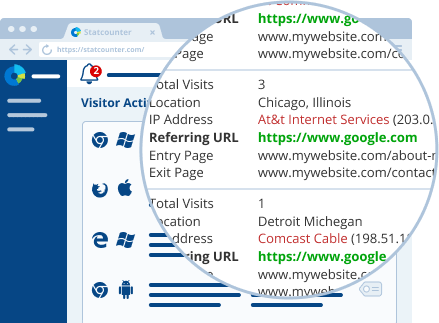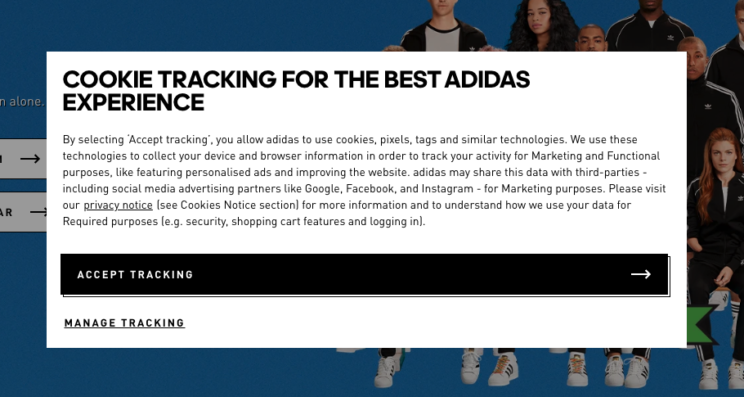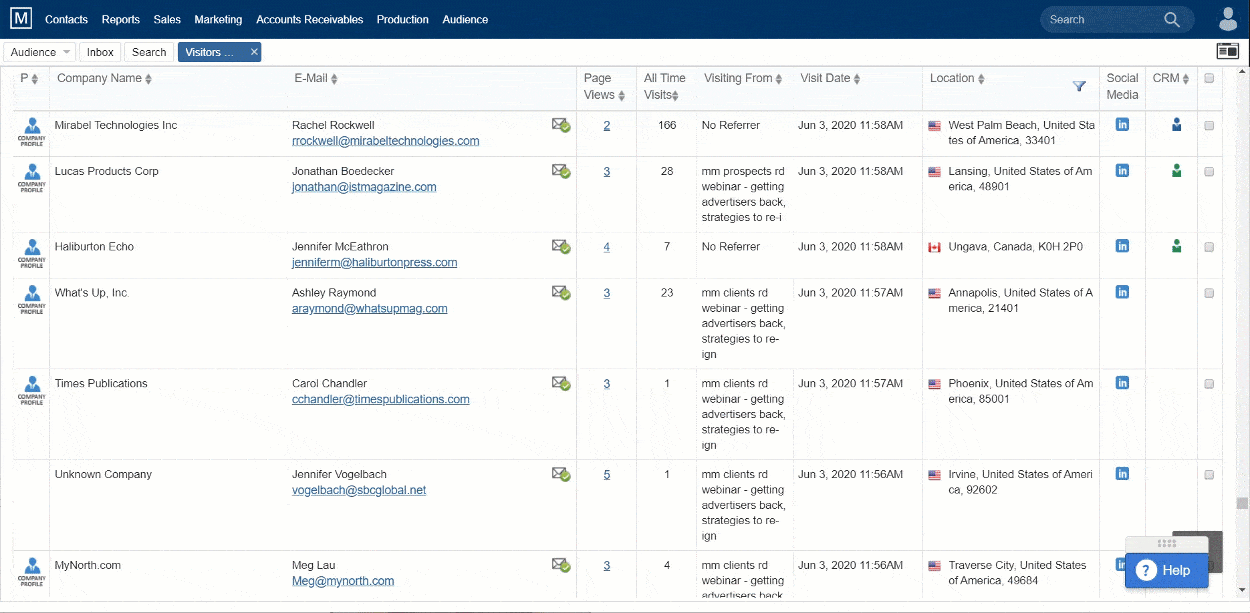The average website receives about 1,000 new visitors per month.
That’s 1,000 potential new leads, prospects, and blog subscribers.
But what happens when these visitors leave your website without filling out a contact form?
How do you engage with them without a phone number, email, or even a name?
This is where website visitor tracking comes in. It gives you a huge advantage in generating leads.
With this feature, your website visitors no longer have to be anonymous!
Learn more about website visitor tracking, how it works, and how your business can benefit from the data it provides.
How to track website visitors?
So, how exactly do you track website visitors?
With website visitor tracking, it’s actually quite simple.
The software performs a reverse IP lookup, also known as a reverse domain name system.
Think of an IP address as a sort of postal address for a specific device within a network.
The IP address gives insight into what device a user is searching your site on (mobile/tablet/desktop) and where in the world that device is located.
Using that information, website visitor tracking software is able to scour the internet for publicly available pieces of information connected to that specific IP address.
This information can include a website visitor’s:
- Name
- Industry
- Company
- Job title
- Social media profiles
- Images
This information can then be transformed into actionable strategies, which will, ideally, guide visitors through your sales process.

Apply web visitor tracking data
Once you have a visitor’s information, you can attempt to convert them from a web visitor to a lead through your marketing efforts.
You can use this information to send out marketing emails that are specifically tailored to the user’s interests, like relevant industry trends.
But, beyond knowing what to send your user, website visitor tracking data is a vital part in understanding exactly what your users are looking for.
Use this insight into customer pain points to adjust everything, from your campaigns to your website to your sales models.
Based on a visitor’s job title, you can determine whether or not they make the buying decisions for their company. Depending on the answer, you can adjust your content for them accordingly.
By knowing which companies are interested in your product or service, you can “build a list of similar sized companies in the same industry, and target … a large pool of high-value potential prospects to target.”
Determining the most frequented pages and how much time is spent on them allows you to identify the features they’re most interested in, and then focus your marketing efforts there.
You can personalize entire landing pages and PPC campaigns to directly address specific user pain points.
Here are some additional ways you can use the information you acquire through website visitor tracking to improve your marketing campaigns:
- Keep track of your visitors’ journeys. By tracking visitor activity on your website, you gain insight into their buying and decision-making behaviors.
What pages are users lingering on? Which are they immediately clicking away from? Do they fill out a form on a specific page? Is there a specific blog garnering a lot of interest?
- Analyze content and campaign strategies. You can use the information you gain from analyzing your visitors’ journeys to optimize your website, content strategy, and user experience.
If users instantly click away from a page, consider analyzing it and finding the error that’s contributing to the high exit rate.
- Develop personas. With website visitor tracking data, you can identify common demographics among your audiences and develop personas.
For example, you may notice that your website visitors are usually between the ages of 35 to 44 years old and most commonly work in the SaaS industry.
You can use this information to develop campaigns with language and content that this “persona” may find engaging and then:
- Segment your audience. Once you’ve crafted your personas and identified their characteristics, you can then group them accordingly.
Segmenting allows you to target distinct personas using different methods. This is a great way to A/B test and narrow down marketing strategies to those your audiences respond best to.
- Optimize digital content for lead generation. A direct result of segmenting your audience by persona is a clearer vision on how to optimize your content for lead generation.
Again, the more insight you have the better you can optimize your digital content.
You can take it one step further by analyzing specific triggers that lead to a conversion, and molding your content to encourage that action.
Every time you capture a lead on your website, the data will be there (from the website visitor tracking) to support your strategies.
There are ample possibilities of what you can do with your website visitor tracking data. However…
What to keep in mind when tracking website visitors?
With the great power that comes with website visitor tracking comes an even greater responsibility.
Here are some important things to keep in mind when using website visitor tracking:
- Make sure users know that their data is being used. This is crucial if you plan to use any of their data for your marketing and sales efforts.
“It’s of the utmost importance to commit to a website visitor tracking software that offers clear, easily accessible policies regarding cookies, privacy, and terms and conditions. These can usually be found in the website footer or as a pop-up asking users to accept cookies.”

- Cold-calling is still not OK. Remember: Just because you have a user’s phone number does not mean that cold-calling is the most efficient way to reach them.
In fact, many users are actually put off by a cold call, especially if all they’ve done is check out your website. - Don’t assume that every user who visits your site is ready to make a purchase. You should be using website visitor tracking data to supplement lead nurturing strategies, not avoid them altogether and head straight for the finish line.
You need to make sure that you’re trying to solve the user’s problem in any way you can. The best way to do so is not always by trying to sell them on your product or service.
For example, if a user viewed a particular blog, consider sending them relevant supplemental content. As they read more of your content, they’ll come to trust that you are a leading authority in your industry.
The user may then organically decide that they want or need what your company provides.
Make the most out of website visitor tracking data
You may be wondering: Which tool is best for website visitor tracking?
Considering all the potential privacy concerns that come along with this feature, you want to “commit to a software that puts privacy as a top priority.”
This ensures that you’re valuing your users’ data and using it only to better accommodate their needs.
Additionally, insights provided by website visitor tracking are especially useful when paired with a customer relationship management system, like Mirabel’s Marketing Manager (www.mirabelsmarketingmanager.com).
This software offers you security through an Abuse & Anti-Spam Policy. They also boast a number of features that make the data acquired from website visitors more valuable.
These marketing features include:
- Populating all of a users’ website visits
- Detailing each page clicked and how long the user visited for
- Grouping contacts with the same workplace to create a robust company profile
- Logging all future and past touchpoints
- Recording interactions, such as emails and phone calls, alongside their website visits, to avoid lost or overlooked data
- Sending alerts when quality leads visit your website
- Assigning lead scores based on website traffic, content downloads, and email activity

Conclusion
To sum up, website visitor tracking is a powerful tool. When used properly, it can increase conversions and move leads through your sales funnel efficiently and effectively.
If you’re interested in taking your sales and marketing strategies to the next level, click below to learn more about Mirabel’s Marketing Manager.
SEE FOR YOURSELF
Watch an overview to learn how B2B marketing automation by Mirabel Technologies can help you increase traffic, optimize your funnel, drive more leads, improve conversions, and boost ROI — at a price you can afford!


